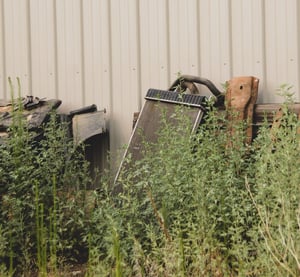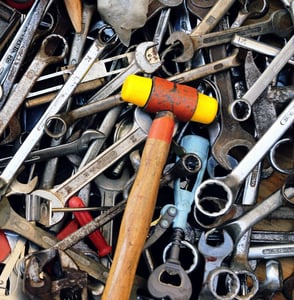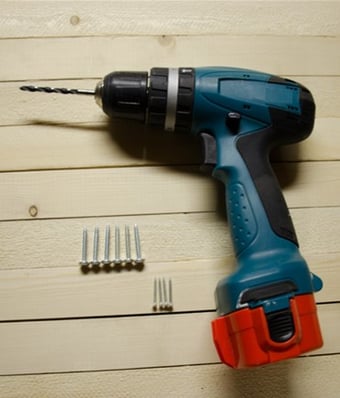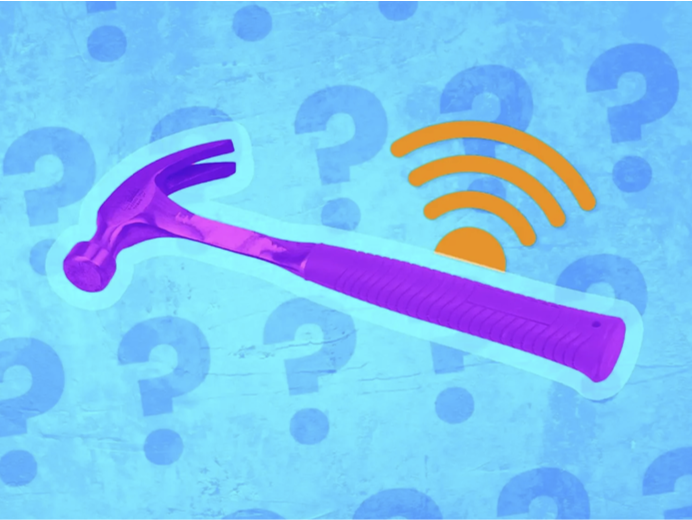Asset Management Problems in Construction
Construction contractors can’t do much without tools—but tools are useless unless they’re in your hand when you need them. Asset management problems are actually a much greater challenge in the construction industry than you might think.
Contracting companies are getting bigger. By 2026, if current trends hold, there will be nearly 60,000 construction firms with up to 99 employees in the U.S. Over 11,000 will have 100 to 499 employees. Getting the right equipment to all those employees, across multiple job sites, is no trivial task. Luckily, technology is here to help.
Digital asset tracking, which uses IoT connectivity to tell you where your tools are at any given moment, is the future of asset management in the construction industry. But it’s also available right now, in the present. In fact, the right asset tracking system can solve all the asset management problems we’re about to discuss.
But to explain the benefits of digital asset tracking, we have to cover the problems with tool management in the construction industry. Here are five costly tool-tracking challenges—and the simplest solution for each.
1. Tools Get Lost
Some construction firms don’t track tools at all. Others track assets manually, on paper, with predictably poor results. When you’re not paying close attention to every asset your company owns, it’s no wonder things get lost.
Of course, your team is too busy building things to fill out asset-tracking paperwork. The solution is to automate the eye on your equipment with an asset tracking platform. Attach a low-cost, low-footprint tracking tag on all tools and equipment. Then log into your digital dashboard to find the missing object. It’s that simple.
 2. Tools Get Stolen
2. Tools Get Stolen
Not all lost assets are misplaced. Some get taken deliberately. While there’s no central authority on construction site theft, the National Equipment Registry estimates that stolen equipment costs the industry around $400 million per year—and possibly up to $1 billion.
The typical asset-tracking tag is bulky and easily removed. But a new generation of tags is as discrete as a Wi-Fi chip. They’re easy to conceal on cases, bins, and tools themselves. Thieves will rarely spot these tiny locator devices. When you add them to workplace assets, you’ll improve the odds of retrieving your property considerably.
3. Workers Overuse Some Tools and  Underuse Others
Underuse Others
Tools don’t live forever. That’s why construction firms don’t buy just one. When you the spread wear and tear out over five copies of the same jackhammer, you’ll get longer lifespans out of all of them—with measurable bottom-line effects. So you don’t want a single tool to get over-used.
At the same time, you shouldn’t pay to store or maintain things you’re not using. So you don’t want tools to be underused, either. When you don’t track your tools, you don’t even have enough information to tell if you have the right number of tools in inventory and how they are being utilized. Automatic asset tracking gives you usage data you can use to get ideal utilization info and right-size your stock.
 4. Firms End Up With Duplicate Assets
4. Firms End Up With Duplicate Assets
Speaking of right-sizing, it’s a key to an efficient operation. It’s most cost-effective to own exactly the number of tools you need. That’s a challenge in the construction industry because companies often buy tools for each new project as they need them.
The cost of a given tool goes into an individual job’s budget. Since purchasing is happening in a silo, it makes it hard to tell when you’re buying something you already own. Without a clear, up-to-date picture of your tool inventories, you can’t fully utilize the assets you already own.
Asset tracking systems can update records automatically, ensuring your books and the shelf are in perfect alignment. That way you don’t end up with duplicate tools, no matter how many job sites you’re working on—and you can finally right-size everything.
5. Employees Spend So Much Time Trying to Manage Tools, Overall Productivity Plummets—and Costs Multiply
What’s the effect of poor tool management? Ultimately, it’s a worse performance at the job site. If you need a tool, and it’s back at the warehouse, you can easily fall behind schedule. Say the warehouse is a half-hour away from your job site: Retrieving a tool costs you an hour of productivity, minimum.
If you can’t find a tool at the job site itself, you have to search for it. Workers spend an average of 90 minutes per day looking for lost assets. According to the industry journal Construction Equipment, a single down unit can cost up to $350 per hour—meaning the average misplaced tool incident could cost your company as much as $525. Ultimately, asset tracking supports productivity, which is to say, it helps you get the job done on time and under budget. Just be sure to choose an asset tracking system that is simple to implement and doesn’t create more work for your employees. With this specialized IoT asset tracking on your side, tool management takes care of itself—so you can take care of the project and not worry about asset management problems.




